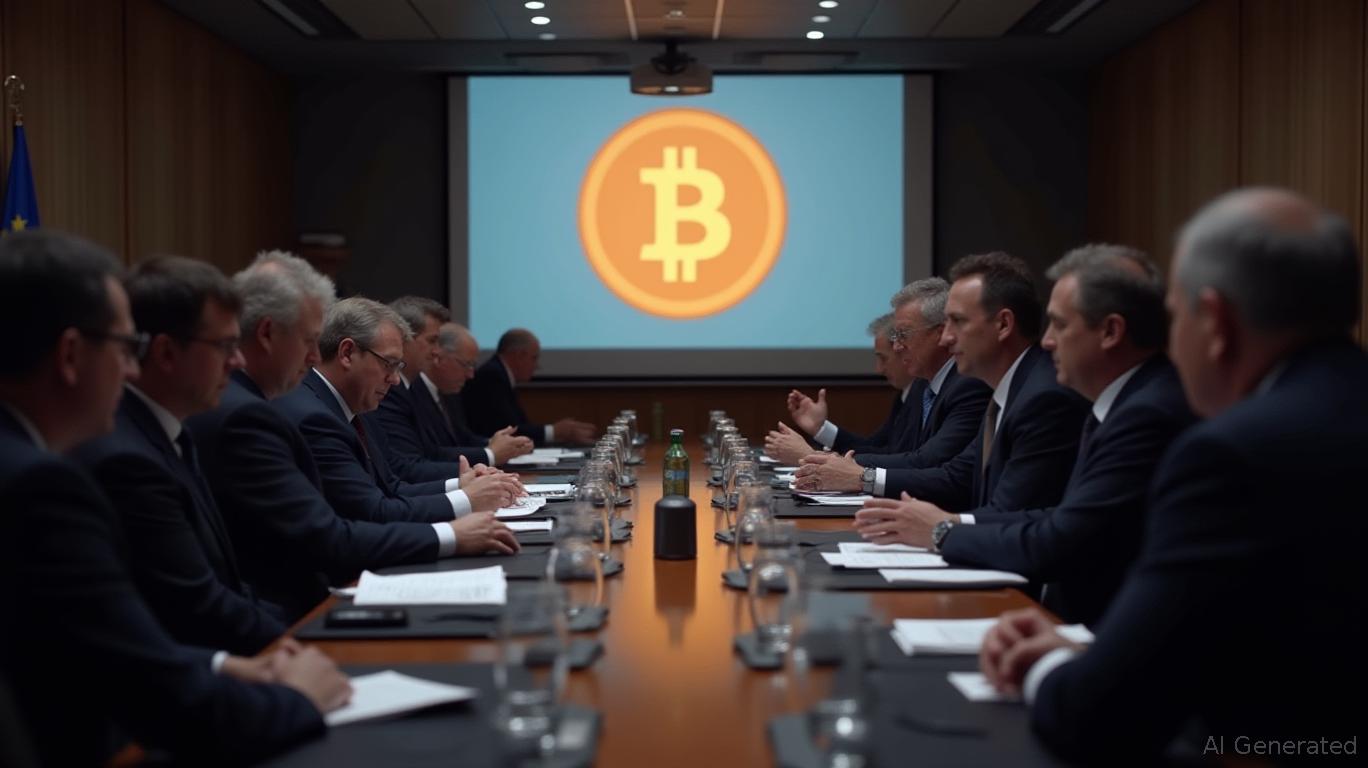Bitcoin Updates: France Challenges ECB, Supports Bitcoin Amid EU Rules Restricting Stablecoin Growth
- USDC's $76B supply growth driven by Circle's ClearBank partnership, enabling instant EUR-to-stablecoin conversions under MiCA-compliant audits. - EU regulatory clashes between MiCA and PSD2 double compliance costs, risking stablecoin adoption as France rejects ECB's digital euro in favor of BTC and euro-stablecoins. - DeFi platforms boost USDC liquidity via cross-chain integrations, but fragmented infrastructure across 15+ blockchains creates interoperability challenges. - France's 2% BTC reserve proposa
USD Coin (USDC) has reached a circulating supply of $76 billion, propelled by key alliances and multi-chain expansions that highlight its significance as a foundational element in the worldwide crypto ecosystem.

At the same time, regulatory ambiguity continues to affect the EU’s stablecoin industry. Conflicting requirements between MiCA and the Payment Services Directive (PSD2) have imposed additional compliance challenges, forcing companies to secure two separate licenses for stablecoin custody and transfer operations. Circle’s EU policy head,
France has taken a decisive approach in this environment, with legislators rejecting the European Central Bank’s digital euro initiative and instead supporting
Decentralized finance (DeFi) platforms are also influencing the evolution of stablecoins. Bybit’s adoption of native USDC transfers on Hedera’s blockchain has increased liquidity on the ESG-oriented network, with inflows rising by 25% after the announcement, as previously reported by ABC Money. Likewise, Solana’s network recently saw $750 million in USDC minted, leveraging its high-speed capabilities to support DeFi and NFT markets. However, the stablecoin landscape remains fragmented. By late 2025, USDC is available on over 15 blockchains, while USDT operates on eight, creating interoperability issues that complicate cross-chain transfers and liquidity management—a challenge discussed in an .
The so-called “stablecoin bridge problem” has become a significant challenge. Recent research has shown that having multiple token contracts for a single stablecoin—such as wrapped tokens or chain-specific versions—splits liquidity and raises security concerns. Solutions like intent-based bridging, where users define their transaction objectives without manually choosing transfer routes, are gaining popularity. Protocols such as Across are working to unify these processes, allowing for smooth cross-chain transfers while hiding technical complexities, as explored in detail in the Across blog.
As stablecoins see wider adoption—from remittances in high-inflation countries to use in institutional treasuries—the sector stands at a crucial crossroads. While regulatory progress and technological advances are fueling expansion, unresolved issues around interoperability and compliance threaten to fragment the market. With USDC’s market capitalization approaching $76 billion and DeFi platforms testing high-yield offerings like MEXC’s 600% APR BTC rewards, a .
---
Disclaimer: The content of this article solely reflects the author's opinion and does not represent the platform in any capacity. This article is not intended to serve as a reference for making investment decisions.
You may also like
Pudgy Penguins Collaborate with DreamWorks to Connect NFTs and Popular Animated Entertainment
- Pudgy Penguins partners with DreamWorks' Kung Fu Panda to bridge NFTs and mainstream animation, aiming to expand into a global entertainment ecosystem akin to Netflix or Disney. - The collaboration redefines NFT-traditional media integration, leveraging penguin characters to reach blockchain-unfamiliar audiences while creating new content like animated shorts and games. - Despite market challenges (42% NFT sales drop) and Ethereum risks, on-chain data suggests growing demand for PENGU tokens ahead of pot
Bluesky reaches 40 million users and launches a beta feature for ‘dislikes’
Ethereum Updates: The Divided Path of Crypto—Ethereum Faces Challenges as TON Innovates and $BZIL Gains Momentum
- November 2025 crypto market shows divergence: Ethereum and Toncoin struggle while BullZilla's $BZIL surges past $1M. - Franklin ETF (EZET) under pressure; ETHZilla sells $40M ETH for buybacks, signaling liquidity challenges. - Toncoin (TON) partners with Chainlink for cross-chain interoperability, targeting institutional DeFi growth. - $BZIL's speculative rise reflects social media-driven hype, mirroring 2021 meme coin trends with utility focus.

Bitcoin Updates: Hong Kong Accelerates Crypto Adoption with HangYue Increasing Bitcoin Assets
- Hong Kong-based HangYue Holdings increased Bitcoin holdings by 6.12 BTC, diversifying assets amid institutional crypto adoption. - The move aligns with Hong Kong's regulatory clarity, positioning the city as a regional crypto hub and encouraging institutional participation. - HangYue cited Bitcoin's resilience and value-storage potential, signaling confidence in its role as a macroeconomic hedge and strategic asset. - Analysts note the purchase could influence other firms as Bitcoin stabilizes above $60,